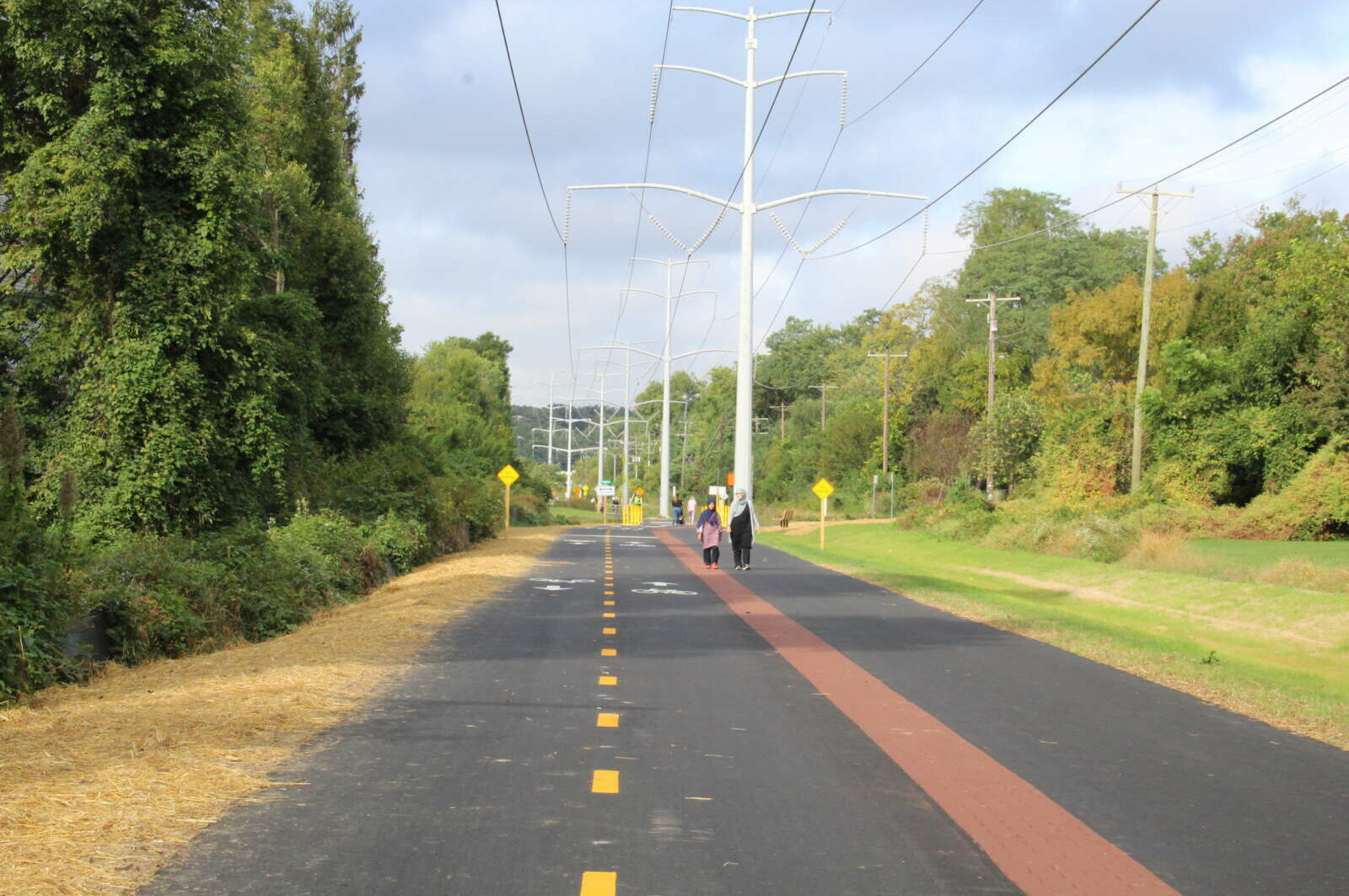A newly-reopened segment of the Washington & Old Dominion (W&OD) Trail in Falls Church boasts a feature that could be replicated in Arlington: separate paths for cyclists and those on foot.
Regional parks authority NOVA Parks widened just over one mile of the trail through the Little City in order to accommodate separate tracks. The organization celebrated the completion of the five-year, $3.7 million project this morning.
The parks authority says something similar should be done along the Arlington segment, which has seen an increased number of pedestrians, leisure riders and commuters competing for the same narrow asphalt strip.
“Our focus was getting Falls Church completed, since we had all the funds and city approval lined up for that,” NOVA Parks Director Paul Gilbert said. “The next step will be to see when we can get the Arlington section done — when we have design work done and we can talk to civic groups.”
Two years ago, the organization signaled its intent to widen the two-mile stretch between N. Roosevelt Street and N. Carlin Springs Road and incorporate separated trails. Work is contingent, however, on when a $5.6 million grant from the Northern Virginia Transit Authority becomes available.
That likely won’t happen until 2024, but having the Falls Church segment done helps the process in Arlington, he says.
“It’s not a theoretical,” he said. “Everyone can experience it, see it, understand how it works.”
Among those trying it out was local cycling advocate Gillian Burgess, who hit the trails this past weekend, ahead of the official opening today.
Beautiful weekend to enjoy a bike ride…
On a lovely, car free trail…
That is WIDE and SEPARATES PEOPLE WALKING & BIKING!!!
Thanks @NOVA_Parks – the widened @WODTrail is AWESOME & AMAZING. @Arlparksrec we need more of this! pic.twitter.com/CZtIwCTRGl
— Boo-from-home Gillian (@BikeGillian) September 6, 2021
She says she wants to see similar mode-separated trails for the entire length of the W&OD in Arlington, as well as the Mt. Vernon Trail, the Bluemont Trail and parts of the Custis and Four Mile Run trails.
Gilbert says widening large sections of the Arlington W&OD Trail is “feasible, desirable and necessary.”
Arlington’s Department of Environmental Services, meanwhile, says it is currently monitoring congestion on the trails through bike counters and will consider widening trails for added safety.
“Widening the trail is one tool in our transportation program to allow for safer cycling,” spokeswoman Jessica Baxter said. “If the opportunity presents itself to partner with external agencies and secure grant funding for a project, it certainly is something the County will explore.”
Gilbert says this effort responds to the evolution of the average user over the decades. Forty years ago, the W&OD was mostly used for leisure; today, many cycle it to avoid driving. On top of that, the pandemic led to a surge in use that now exceeds trail capacity.
“It certainly serves that recreational purpose, but it’s grown into a transportation network that is really robust,” with rush-hour peaks and dips resembling a road intersection. “That is a modern phenomenon.”
Ironically, the idea of expanding the trail to accommodate more car-free commuters previously drew opposition from local environmentalists worried that the project would result in a loss of tree canopy. They articulated their concerns in 2019, when NOVA Parks asked the County Board for permission to seek design funding through NVTA.
At the time, the Arlington Tree Action Group said it would be “the most environmentally destructive project that has ever occurred in Arlington’s public spaces.”
The design project was approved on the condition that county staff work with NOVA Parks on a public engagement plan that addresses environmental impact.
Gilbert said the Falls Church project actually facilitated needed environmental work, such as improving stormwater management with permeable pavement and drains and planting native grasses to support local wildlife.
“There’s never been a complete redesign” of the trail, which used to be a railroad bed, he said. “It was never really redesigned to capture stormwater, slow it down, or do any of the things we’re doing now.”
Locally, DES says the feasibility of widening trails depends in part on environmental preservation.
“The County strives to design trails that have the least impact on mature trees,” Baxter said, adding that the county also aims to plant trees as part of its capital projects.



